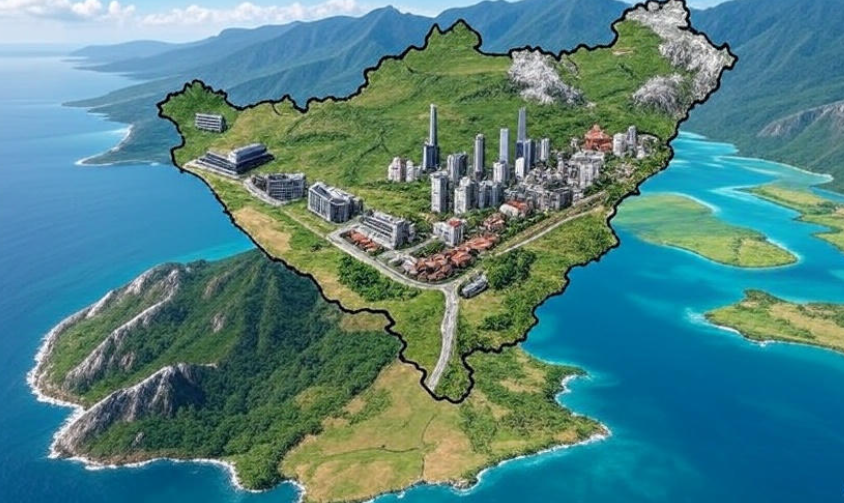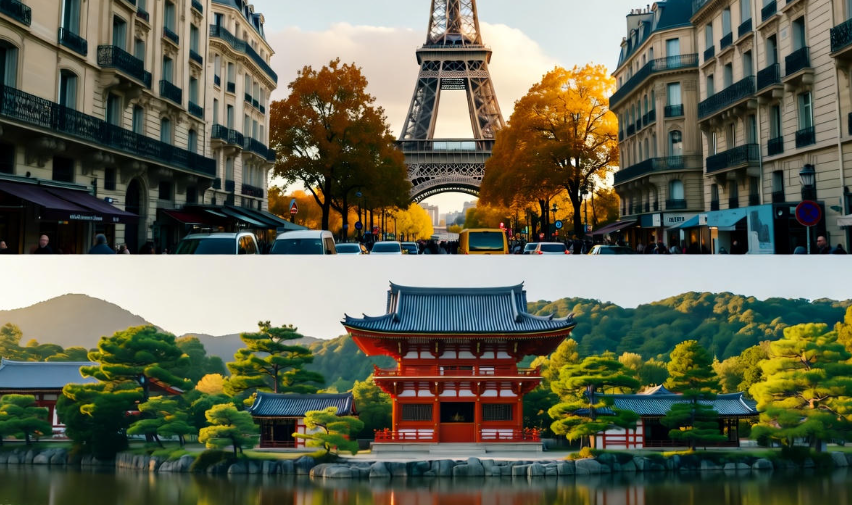Have you ever wondered why some countries don’t stick to just one capital city? Most countries have a single capital that acts as the center for government, culture, and sometimes even business. But a few nations take a different route—they have two capitals. This might sound strange at first, but there are good reasons behind this. Let’s explore why this happens.
Historical Reasons
Many countries that have two capitals do so because of history. Sometimes, a country grows or changes, and its old capital is no longer ideal for administration. For example, South Africa has three capitals: Pretoria (administrative), Bloemfontein (judicial), and Cape Town (legislative). This arrangement dates back to the times of British colonization and the merging of different colonies. Keeping multiple capitals helped balance power between regions.
In other cases, countries move capitals to encourage growth in a different region. Brazil is a perfect example. Its original capital was Rio de Janeiro, a city on the coast. In 1960, the government built Brasília in the interior to promote development in the country’s heart. Brasília became the administrative capital, while Rio still remained the cultural and economic hub.
Geographical Reasons
Geography plays a huge role in deciding capitals. A country might have a coastal city that is great for trade but vulnerable to attacks, and an inland city that is safer for government offices. By dividing responsibilities between two capitals, countries can protect themselves better.
For example, in Malaysia, Kuala Lumpur is the official capital and economic center, but Putrajaya was built to house the federal administrative offices. This separation allows Kuala Lumpur to focus on business, tourism, and commerce, while Putrajaya handles government operations efficiently.
Political Reasons
Sometimes, having two capitals is about balancing political power. In countries with multiple ethnic or regional groups, choosing one city as the only capital can create tensions. By having more than one capital, governments try to make sure no single group feels left out.
Take Bolivia for instance. La Paz is the seat of government, while Sucre is the constitutional capital. This split honors historical agreements and satisfies regional demands. Without it, political unrest could have been worse.
Economic Reasons
Some countries separate their capitals to boost economic development in less developed areas. Governments may build a new administrative capital in a less crowded or underdeveloped area to encourage investment, infrastructure growth, and population spread.
Nigeria did this when it moved its capital from Lagos to Abuja in 1991. Lagos is a bustling city but overcrowded and congested. Abuja, located in the center of the country, provides more space and accessibility. It was designed to be neutral territory, away from ethnic rivalries, while Lagos still remains Nigeria’s commercial powerhouse.
Practical Administrative Reasons
In some cases, splitting capitals is purely about convenience and efficiency. Running a country involves managing ministries, courts, embassies, and parliaments. In smaller countries, one city can handle all these responsibilities, but in larger or geographically stretched nations, this can become impractical.
By separating legislative, administrative, and judicial functions into different cities, governments make operations smoother. This is evident in South Africa, where the three capitals each have distinct responsibilities.
Table: Examples of Countries with Two Capitals
| Country | Capitals | Reason for Two Capitals |
|---|---|---|
| South Africa | Pretoria, Bloemfontein, Cape Town | Historical, administrative, and judicial balance |
| Bolivia | La Paz, Sucre | Political compromise, historical significance |
| Malaysia | Kuala Lumpur, Putrajaya | Administrative efficiency, economic planning |
| Brazil | Brasília, Rio de Janeiro | Development and geographical balance |
| Sri Lanka | Colombo, Sri Jayawardenepura Kotte | Administrative vs. commercial importance |
| Nigeria | Abuja, Lagos | Geographical neutrality, overcrowding, economic growth |
Challenges of Having Two Capitals
Having two capitals might seem smart, but it isn’t always easy. Governments have to spend more money to maintain infrastructure in both cities. Officials may have to travel frequently between them, which can waste time and resources.
Sometimes, citizens feel disconnected from the political heart if the government offices are far away. Also, businesses may face higher costs if major offices are split. Despite these challenges, many countries believe the benefits outweigh the drawbacks.

Impact on Citizens
For citizens, having two capitals can be confusing at first. Imagine needing to visit a government office and realizing it’s located in a city hundreds of kilometers away from the main capital. But over time, people adjust. Often, this split improves access to services, reduces overcrowding in one city, and creates new opportunities in developing regions.
Unique Cultural Significance
In some countries, each capital represents different cultural or historical identities. For instance, Sucre in Bolivia symbolizes colonial history and law, while La Paz is more modern and administrative. This duality preserves heritage while still meeting the practical needs of governance.
Modern Trends
In today’s world, technology is changing how capitals function. Remote work, digital governance, and online services reduce the need for citizens to travel to a physical capital. Yet, countries with two capitals continue to keep the system because it serves deeper historical, political, and economic purposes.
FAQs
Q: Which country has the most capitals?
A: South Africa has three capitals: Pretoria, Cape Town, and Bloemfontein, each serving a unique function.
Q: Can a country have more than two capitals?
A: Yes, though rare. Some countries like South Africa have three, dividing administrative, legislative, and judicial functions.
Q: Is it more expensive to have two capitals?
A: Generally, yes. Maintaining infrastructure, transport, and government offices in multiple cities costs more, but countries do it for political balance and development purposes.
Q: Will more countries start having two capitals?
A: It’s unlikely unless a country faces similar issues of overcrowding, political balance, or development needs. Modern technology reduces the necessity for multiple capitals.
Q: Do citizens benefit from two capitals?
A: Yes, they may enjoy reduced overcrowding, better regional development, and political balance. However, travel between capitals can be inconvenient.
Conclusion
Having two capitals isn’t about confusion—it’s about balance. History, politics, economics, geography, and culture all influence why countries take this approach. While it has its challenges, it also spreads growth, reduces regional tensions, and preserves heritage. For countries with large territories, diverse populations, or historical compromises, two capitals can be a smart solution.
So next time you hear about a country with two capitals, remember—it’s not a mistake. It’s a strategic choice, designed to balance power, culture, and development in a complex world.




